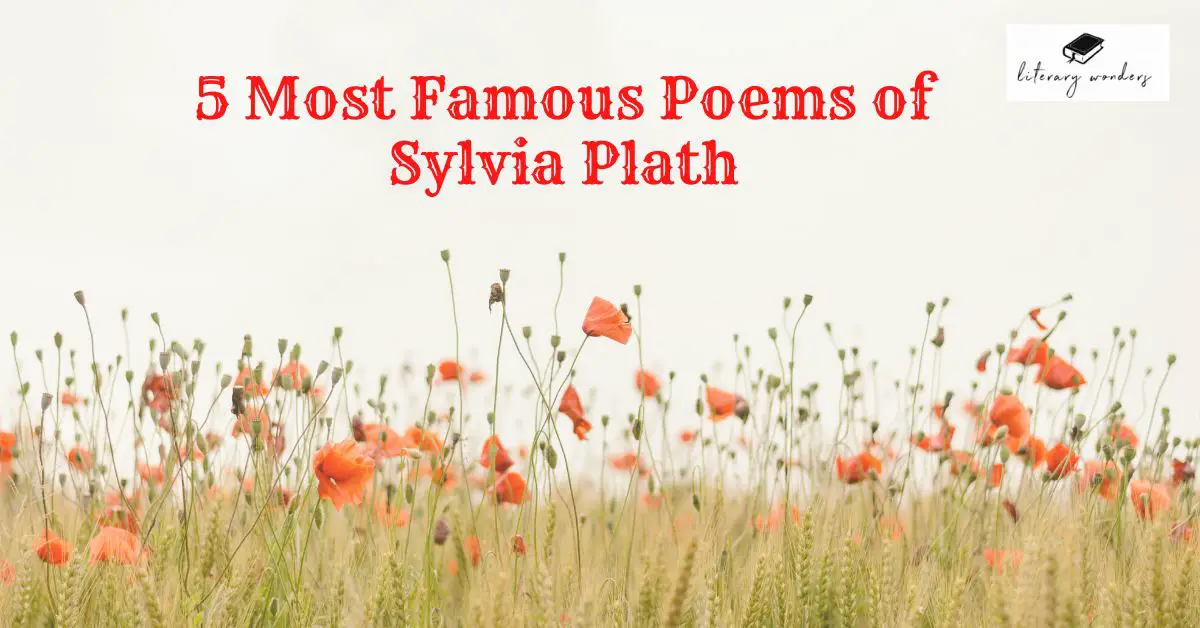There are many famous poets worldwide, but some stand out more than others. Sylvia Plath was one of these poets. Her talent extended beyond poetry to short stories and novels as well. Plath was born in Boston, Massachusetts, on October 27, 1932. She attended Smith College from 1950-1952 and earned her bachelor’s degree at Cambridge University in England in 1955. After completing three years of study at the prestigious Cambridge School of Art.
At Cambridge, Plath met and married fellow poet Ted Hughes and published her first book of poetry, The Colossus, in 1960. Her second book of poetry, Ariel, was published two years later to immediate critical acclaim and remained her most famous and well-known work to date.
Though her talent was extraordinary, she struggled with depression throughout her adult life. Sadly, she committed suicide in 1963 at 30 by sticking her head in the oven while her children were sleeping in the next room. She wrote some of the most timeless poetry and prose in modern history in her relatively short life. The analysis of her most famous poems is detailed below.
1) “The Colossus”
The poem talks about the phenomenon of unavoidable death and despair. When grief looms over you and your loved ones, all you can do is keep pushing forward. You have to get past it. At times like these, you’re just a traveller on land, while others may be snorkelling in their sorrows. What if they don’t want to leave that pool? What if they don’t have anyone there to help them out of it? No one can take away your pain or transform it into something positive for you. But you are not alone.
If we look at life from an unbiased perspective, we realize that people die every day, and everyone grieves differently. Therefore, we should respect each other’s ways of coping with death as long as they aren’t harming themselves or others. And if someone wants to stay in their watery pit of despair forever, let them stay.
It is absolutely normal for them as long as they aren’t harming themselves or others around them. It’s okay to let yourself drown sometimes; it’s okay to feel hopeless sometimes; but most importantly, it’s okay to come back up for air when you need to because life goes on whether we’re ready for it or not.
2) “Daddy”
The most famous poem by Sylvia Plath is a bitter and accusatory look at her father’s abandonment. It was published in Ariel, along with many poems exploring depression and mental illness that led to her suicide in 1963. The poem brilliantly talks about the dysfunctional relationship between a father and a daughter. The writer talks about the disturbing terms she shares with her father. The speaker wants to love, care and protection from her father as every child wishes to enjoy.
Unfortunately, her daddy is not an ideal fatherly figure. He is stern and does not allow her daughter to have any say in her life. Due to his rigid nature, the speaker compares her father to a heavy marble statue, devil and swastika. Unfortunately, her misery does not end with the death of her father. She married a man who resembled her father, adding more pain to her life.
3) “Lady Lazarus”
Before she published her first book, The Colossus and Other Poems, in 1960, Plath had been writing poetry on and off for many years. Though it was her first collection to get national attention, she’d written “Lady Lazarus” several years earlier—in 1955.
The poem recounts a woman’s experiences during an exorcism (Lazarus was one of Jesus’ followers who died and came back to life after Jesus raised him from the dead). The poem is also considered a feminist work as it recounts how much power women have over men. She argues that they shouldn’t be afraid to use that power. Some critics consider it one of Plath’s best works.
4. “Tulips”
Sylvia Plath produced this fantastic poem during the trying time of her life. Se penned down Tulips in March 1961 after removing her appendix and receiving get-well flowers from a friend. The poem begins when the speaker is hospitalized for a procedure. The writer describes how she feels torn and divided between her wild desires to stay in the peaceful world of the hospital and the need to catch the normal pace of life.
The description shows her distress from life that she seeks refuge in a hospital bed, where people usually feel uncomfortable. A bouquet of blood-red tulips n the poem presents the pain and vividness of life. It stands for life and death.
5. Poppies in October
Poppies in October is yet another forever green poem by Sylvia Plath. The poem beautifully compares the beauty of the natural world with the world of humans. The melancholic poem captures the mesmerizing beauty of red poppies in October when the flowers usually do not bloom. Instead of adoring the comfort, they bring to the human eye; the speaker compared them to the ugly world around them. She compared them with the images of blood, pollution and the dark human side.
This short poem opens vistas for various interpretations. However, to the speaker, the poppies do not signify merriment and glee. Instead, they remind her of the bleak and dark world she shares. She wonders that these beautiful flowers grow so late in the year, in a frost-covered forest, where no one stands to adore their beauty.
See Also:

